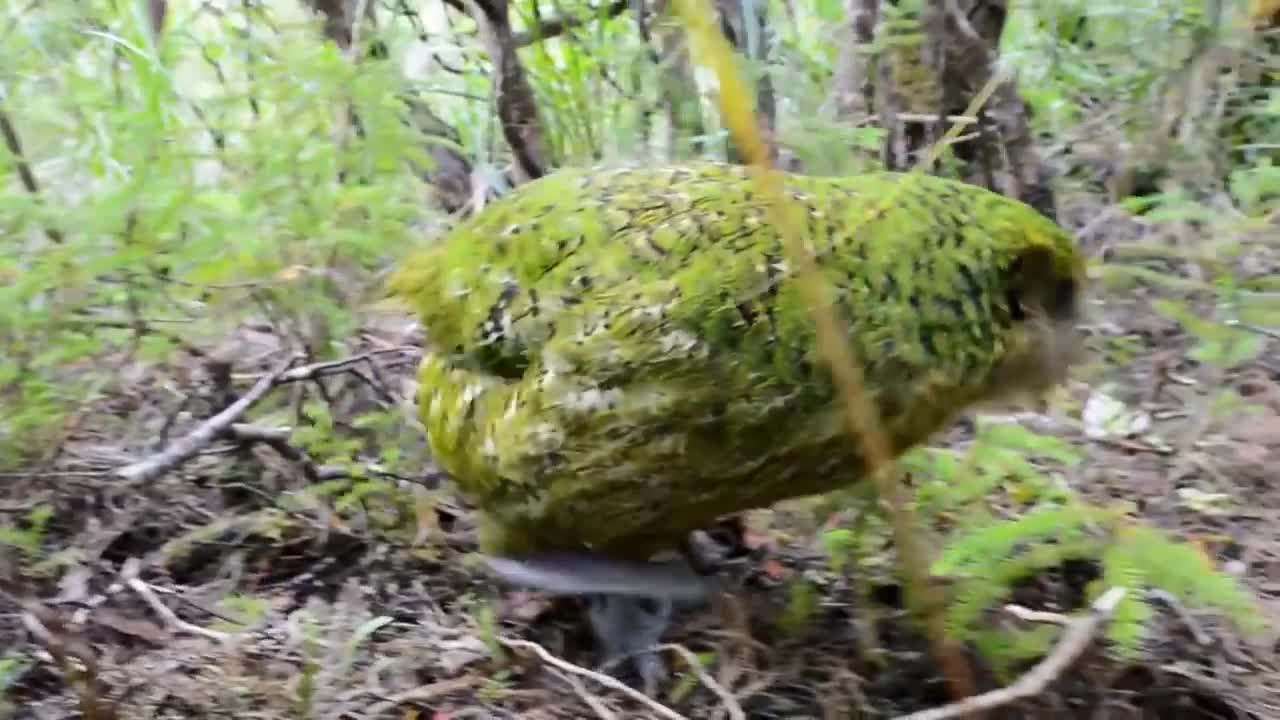Premium Only Content

Kakapo parrot - parrot species (11)
It has finely blotched yellow-green plumage, a distinct facial disc, a large grey beak, short legs, large feet, and relatively short wings and tail. A combination of traits make it unique among parrots: it is the world's only flightless parrot, the world's heaviest parrot, nocturnal, herbivorous, visibly sexually dimorphic in body size, has a low basal metabolic rate, and no male parental care, and is the only parrot to have a polygynous lek breeding system. It is also possibly one of the world's longest-living birds, with a reported lifespan of up to 100 years.[6]
Its anatomy typifies the tendency of bird evolution on oceanic islands with few predators and abundant food to exhibit island syndrome: a generally robust physique at the expense of flight abilities, resulting in reduced wing muscles and a diminished keel on the sternum. Like many other New Zealand bird species, the kākāpō was historically important to Māori, the indigenous people of New Zealand, appearing in many of their traditional legends and folklore; however it was also heavily hunted and used as a resource by Māori, both for its meat as a food source and for its feathers, which were used to make highly valued pieces of clothing. Kākāpō were also occasionally kept as pets.
The kākāpō is critically endangered; the total known adult population is 199[7] living individuals, all of which are named and tagged, confined to four small islands off the coast of New Zealand that have been cleared of predators.[8] The introduction of predators such as cats, rats, ferrets, and stoats during British colonisation almost wiped out the already devastated kākāpō, having suffered over hunting from early Māori. Conservation efforts began in the 1890s, but they were not very successful until the implementation of the Kakapo Recovery Programme in 1995.
Most kākāpō are kept on two predator-free small islands, Codfish / Whenua Hou and Anchor, where they are closely monitored, while somewhat larger Little Barrier / Hauturu Island is being trialled as a third home for the species
-
 LIVE
LIVE
Rethinking the Dollar
27 minutes agoTime to Pay the Piper! Debt Refinance Coming in 2025
329 watching -
 52:34
52:34
PMG
13 hours ago $0.11 earnedHannah Faulkner and Steve Friend | EXPOSE THE FBI CORRUPTION - KASH PATEL
5581 -
 LIVE
LIVE
Wendy Bell Radio
6 hours agoOn Day One
11,515 watching -
 1:59:27
1:59:27
Jeff Ahern
3 hours ago $1.41 earnedFriday Freak out with Jeff Ahern (6am Pacific)
7.62K -
 1:56:07
1:56:07
Game On!
11 hours ago $0.67 earnedJosh Allen is the NFL MVP! It's not even close!
7.33K1 -
 13:05
13:05
Neil McCoy-Ward
2 hours agoWhy The Media Won't Tell You What Milei Did In Argentina...
17.6K1 -
 3:56:44
3:56:44
Alex Zedra
14 hours agoLIVE! Trying to get achievements in Devour
201K26 -
 2:00:43
2:00:43
The Quartering
17 hours agoThe MAGA Wars Have Begun! Vivek & Elon Get Massive Backlash & Much More
210K94 -
 1:25:53
1:25:53
Kim Iversen
3 days agoStriking Back: Taking on the ADL’s Anti-Free Speech Agenda
136K118 -
 49:35
49:35
Donald Trump Jr.
20 hours agoA New Golden Age: Countdown to Inauguration Day | TRIGGERED Ep.202
251K272